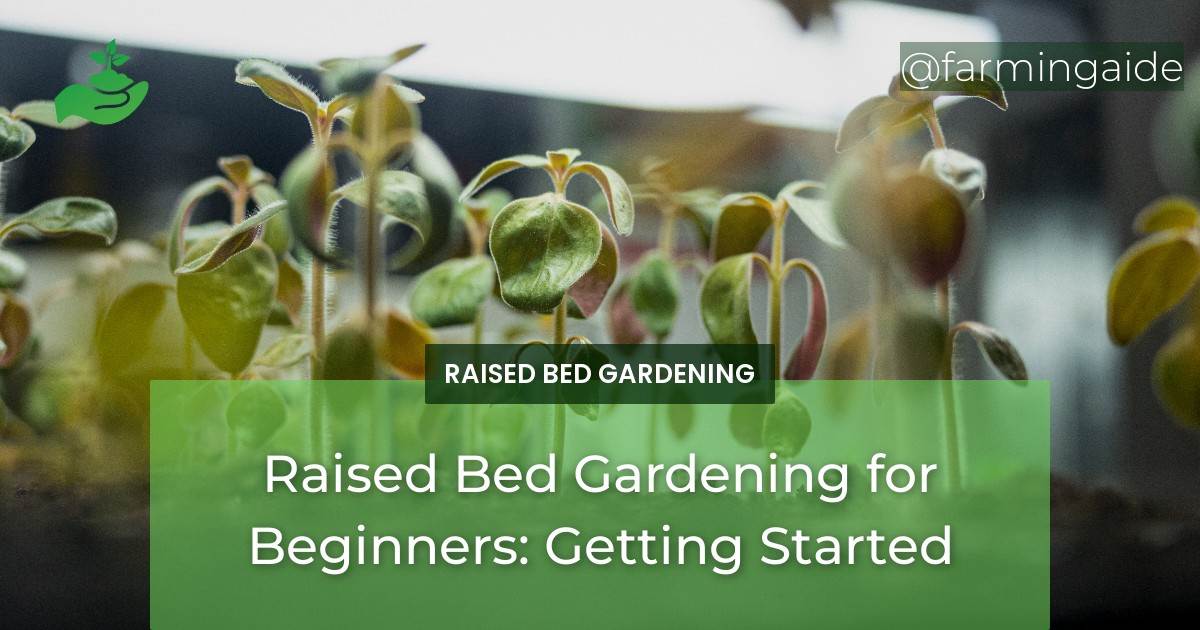Raised Bed Gardening Basics
Are you interested in gardening but struggling with poor soil quality, limited space, or physical limitations? Raised bed gardening may be the perfect solution for you!
Table of Contents
What is Raised Bed Gardening?
Raised bed gardening is a method of growing plants in a contained area that is elevated above the ground. Typically, the bed is surrounded by a wooden or concrete frame that is filled with soil, compost, and other organic matter. This provides a controlled environment for growing plants, which can be customized to meet your specific needs and preferences.
Benefits of Raised Bed Gardening
- Easier on your back and knees
- Better soil quality
- More efficient use of space
- Less weeding required
- Less soil compaction
Different Types of Raised Beds
Before you start your raised bed garden, it’s important to choose the right type of bed for your needs. Here are some of the most common types:
- Wooden beds
- Concrete blocks
- Brick beds
- Galvanized steel beds
- Fabric beds
Choosing the Right Location
When choosing a location for your raised bed garden, consider the following:
- Amount of sunlight
- Accessibility to water
- Proximity to your house or shed
- Level ground
- Good drainage
Step-by-Step Guide for Beginners
Now that you understand the basics of raised bed gardening, let’s dive into the step-by-step process for creating your own raised bed garden.
Building a Raised Bed
Here’s how to build a basic wooden raised bed:
- Choose the size of your bed and purchase the necessary materials. You will need four wooden boards, screws, and a drill.
- Assemble the bed by screwing the boards together.
- Place the bed in the desired location.
Soil Preparation
The quality of your soil is crucial to the success of your raised bed garden. Here’s how to prepare your soil:
- Remove any grass or weeds from the area where your bed will be placed.
- Fill the bed with a mixture of soil, compost, and other organic matter.
- Use a garden fork or tiller to mix the soil and compost together.
Planting in a Raised Bed
Here are some tips for planting in your raised bed:
- Choose plants that are suitable for your climate and the amount of sunlight your raised bed will receive.
- Arrange your plants in the bed according to their size and growth habits.
- Use a trowel or shovel to dig holes for each plant.
- Water the plants thoroughly after planting.
Watering and Fertilizing
Here’s how to keep your plants healthy and well-nourished:
- Water your plants regularly, especially during dry spells.
- Fertilize your plants with a balanced fertilizer every 3-4 weeks.
Maintaining a Raised Bed
Here are some tips for maintaining your raised bed:
- Remove any weeds or dead foliage regularly.
- Prune your plants as needed to promote healthy growth.
- Monitor your plants for signs of pests or disease.
Dealing with Common Issues
Here are some common issues you may encounter with your raised bed garden and how to address them:
- Poor Drainage: Add a layer of gravel or sand to the bottom of your bed to improve drainage.
- Pests: Use organic pest control methods such as companion planting, insecticidal soap, or neem oil.
- Disease: Remove any infected plants and treat the soil with a fungicide.
ALSO READ
Essential Tools and Supplies
Here are the tools and supplies you’ll need to get started with raised bed gardening:
Tools for Building a Raised Bed
- Drill
- Screws
- Saw
- Measuring tape
Tools for Soil Preparation and Planting
- Garden fork or tiller
- Shovel or trowel
- Gloves
Essential Supplies for a Raised Bed
- Soil
- Compost or other organic matter
- Plants
- Mulch
Optional Supplies for a Raised Bed
- Irrigation system
- Fencing
- Trellises or cages
- Garden stakes
What are the basics for starting raised bed gardening in the UK?
If you’re new to gardening, the beginner’s raised bed gardening guide is a great place to start. In the UK, it’s essential to choose a spot with good sunlight and proper drainage. Be sure to use high-quality soil and select the right plants for the climate. Happy gardening!
Conclusion
Raised bed gardening is a fun and rewarding hobby that can be enjoyed by gardeners of all ages and skill levels. By following this step-by-step guide and using the right tools and supplies, you can create a beautiful and productive garden that will provide fresh produce and a sense of satisfaction for years to come!
RELATED ARTICLES:


